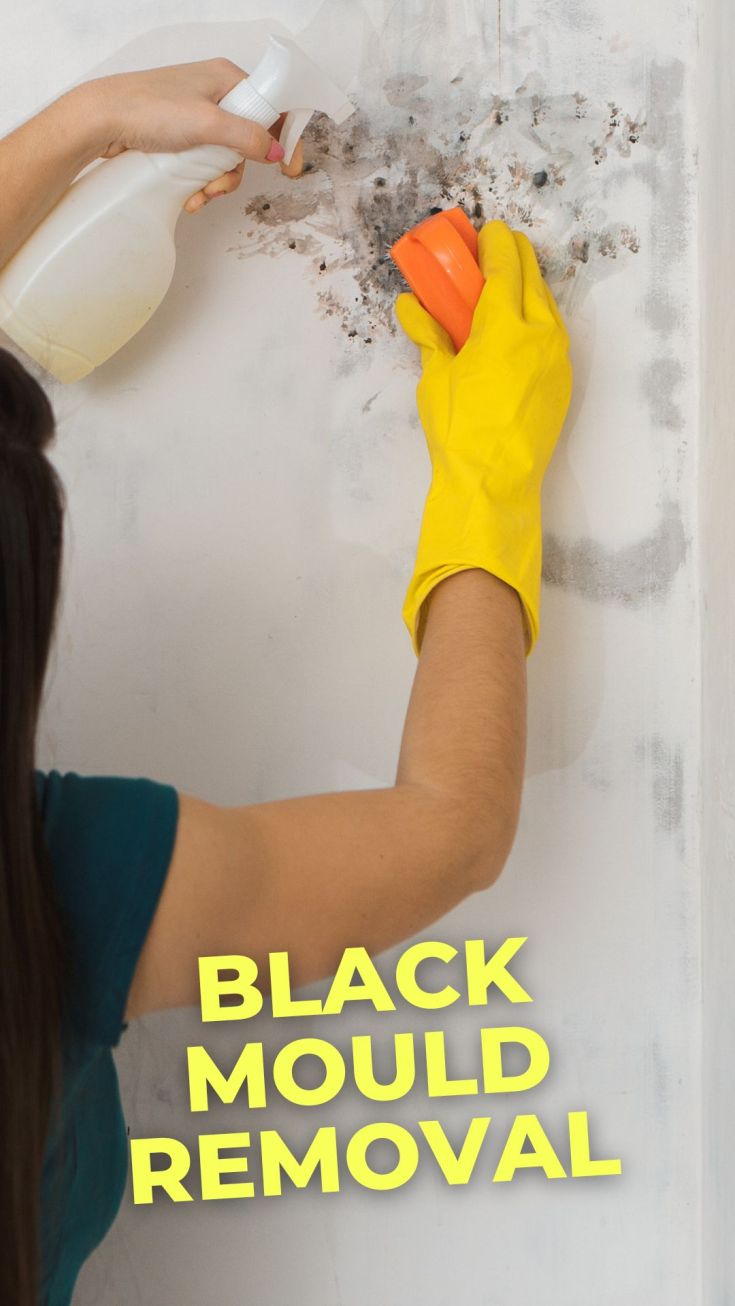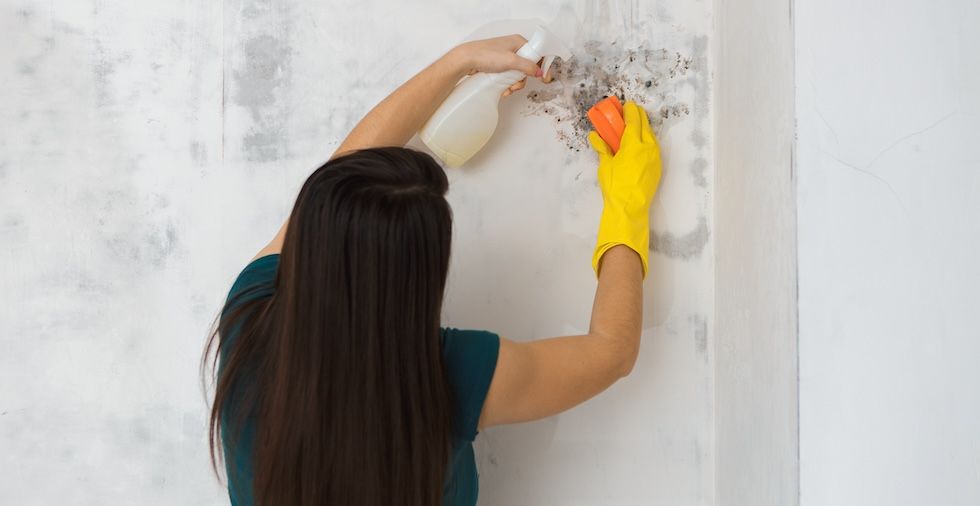You've spotted that pesky black mould creeping its way into your home? You might not know what to do. The truth is that black mould — or Stachybotrys chartarum, to give it its scientific name — is dangerous to your property and health. You need to act fast.
Luckily, black mould removal doesn't have to be complicated. Armed with the right tools and a whole load of elbow grease, you should have no problem removing the stuff on windows, walls, and everywhere else. Read our simple guide on how to remove black mould now.
What is black mould?
Stachybotrys chartarum is the scientific name given to the black-green mould that has become a pest in many homes. Whenever there is excessive moisture in a space, you will find that this horrible mould starts to grow and spread. While it tends to grow on cellulose materials — such as fibreboard or paper — you can also find it on standard walls, on windows, and around ceilings.
When you notice black mould growing in your home, it is essential that you do something about it. You might find that your house smells musty when you have black mould or see it growing on your walls. You should check your kitchen and bathroom for any signs of black mould. However, be aware that this particular health hazard has the potential to grow anywhere in your home. Black mould removal is a must.
How dangerous is black mould, anyway?
If you have black mould in your home, don't ignore it. Learning about black mould removal is not simply about making your home look good and fresh. No, it can quite literally save your life. According to a BBC report on the dangers of black mould, prolonged exposure to this substance can lead to death. That is because breathing in the spores from the mould can trigger respiratory illnesses, asthma, and allergies. In short, you don't want to take any risks here.
It doesn't end there. There's a body of research suggesting that black mould is dangerous. One historic American study published in the National Library of Medicine states that black mould "may cause human disease through direct irritation, type 1 hypersensitivity or the production of toxins." Investing in black mould removal could make a significant difference to your health and that of anyone living in your home. Don't ignore the signs of this worrying feature any longer.
The signs of black mould
Before we move on to removing black mould, let's talk about the signs you need to look for here. While — as we have covered — many people try to ignore the red flags in their homes, doing so is extremely dangerous. Here are some to look out for:
Musty smells
Does your home smell? One of the significant signs of black mould is a musty smell throughout your home. Some people describe this smell as earthy. If you have damp areas in your home, they may be a potential hotspot for black mould growth. For that reason, you need to pay attention to how the inside of your house smells. If something is off, you should investigate the problem. Learn how to get rid of house smells for good in our guide.
Black patches
Most of the time, you can see the black mould growing on windows and walls. When you notice this, you need to get rid of it sooner rather than later. Black mould looks like dark patches that appear from nowhere. Often, as the name suggests, they will be black. However, they can also have a green or yellow tone around their edges.
For information on all types of mould and damp, check out our other article.
Peeling wallpaper
Black mould needs a damp environment to survive. When the inside of your home has a high moisture level, that could cause the wallpaper to peel, too. If you have noticed this inside your home, you should also look out for the signs of black mould. Learning to remove the black mould from your home will help you protect yourself and your family.
Breathing problems
Have your allergies picked up? If you have suddenly started to experience more severe breathing problems than before, you may find that the black mould has something to do with it. Of course, whenever you have a symptom like this, you must see a doctor sooner rather than later. Speak to them about the issue and take any advice they may offer.
How to remove black mould from your home
You can use the following steps to remove black mould from your bathroom, walls, or ceiling. Of course, you must take extra care when dealing with wallpaper. (It may not always be salvageable, especially if you have a damp problem in your home!) Either way, you need to follow the same basic steps. Check out our tutorial below to help you get started:
1. Get the proper safety gear
Before you get started, make sure you protect yourself. You will need a face mask, gloves, and protective goggles. As we have talked about, black mould is not safe. Before starting your black mould removal, you need to put on some safety gear. It's just one of the many reasons to wear gloves.
2. Open the windows and turn on the fans
It doesn't end there. You also need to open the windows when you undergo black mould removal. If you happen to have any fans, etc., you should also use them. The idea is to ventilate the area as best you can. The more movement in the air, the less likely you are to breathe in those nasty spores. Remember, your safety always comes first here.
3. Make your own solution
While there are commercial black mould removers out there, you can also make your own. To do that, mix white vinegar, baking soda, or hydrogen peroxide diluted with water. Of course, you need to protect your hands and face from these chemicals when doing this.
4. Apply the solution
Next, you should apply the cleaning solution directly to the black mould in your bathroom. You can use this on your bathroom sealant, ceiling, and tiling. Add as much as you can to these affected areas, and then wait a while for the solution to work.
5. Get a brush and start scrubbing
When you do that, grab a brush and start scrubbing away. The aim is to get into all of the small cracks and crevices. Of course, if you are dealing with an area with wallpaper, you may have to be gentle. However, the most important thing here is that there is no longer any black mould on the surfaces. Unfortunately, this process can sometimes damage the decor of your home. But keep in mind that black mould is hazardous.
6. Leave to dry
If you are dealing with a waterproof surface, such as bathroom tiles or bathroom sealant, ensure you rinse thoroughly. When dealing with a porous material, such as wallpaper, you can use a cloth to wipe away the excess. Once you have done that, leave the area to dry. You might find that it takes a while for this to happen. Open all of the windows and use the fans again.
7. Get rid of the waste
Spoiler: The cleaning products you have been using here will have mould particles. For that reason, you want to get rid of any sponges or cloths that you used. You can seal these in a plastic bag and throw them away. The last thing you want is to continue spreading mould.
8. Stop any regrowth
The black mould grew because your home was damp. Now that you have got rid of the mould, you need to fix the root of the problem. That means fixing any leaks, dealing with moisture in the air, and getting rid of condensation. You should look out for signs of regrowth and treat them.
Black mould is no joke. It can present a severe hazard to your health. If you want to make sure that you and your family are safe, you need to treat it. Using our black mould removal guide, you should have no problem dealing with the issue. Get started now and keep your home safe.
Q&A
Is it safe to remove black mould myself?
As we have mentioned, black mould presents a serious health hazard. You can remove it if you protect yourself and don't breathe it in. However, if you are concerned about this problem, it may be worth getting an expert to do the job.
Can you paint over black mould?
Painting over black mould is a bad idea. It will not solve the problem. The mould will continue to grow there and could cause some severe damage to your health.
What causes black mould in bedrooms?
Black mould is caused by excess moisture. That may mean that you have a leak in your home, too much condensation, or a damp problem. When you have removed the black mould from your home, you need to make sure that you find and deal with the cause of it.
Where are you having issues with black mould? Let us know in the comments below.


I have black mould on my bathroom ceiling. When I have cleaned that area, can I use mould paint on the ceiling after it's dried.
Yes, as long as the mould has been cleaned and dried out. We'd recommend priming the surface, too.